ISO 9001 Clause 7 is a clause that is part of the popular ISO 9001:2015. This blog is part of a mini-series about ISO 9001. Therefore, I invite you to go and check out the other blogs and videos about the other clauses of ISO 9001. But now, let us focus on ISO 9001 Clause 7, the clause that talks about Support.
Note that the ISO 9001 Clause 7 is a heavy clause. It has multiple sub-clauses and branches into many different areas. But we’ll tackle them all. If you want, you can even listen to the video here. The blog and video are practically the same thing.
Clause 7 is split as follows:
- ISO 9001 Clause 7.1 | Resources
- ISO 9001 Clause 7.2 | Competence
- ISO 9001 Clause 7.3 | Awareness
- ISO 9001 Clause 7.4 | Communication
- ISO 9001 Clause 7.5 | Documented Information
ISO 9001 Clause 7.1 | Resources
The first sub-clause of clause 7 talks about Support. When we talk about support, we are effectively speaking about the resources that we will need to carry out the key processes within your organization.
ISO 9001 Clause 7.1.1 | General
So when talking about resources, first of all in clause 7 .1 .1 we have a general introduction which says that the organization shall determine and provide the resources needed for the establishment, implementation, maintenance and continual improvement of the quality management system.
So as you can see, it’s not only about implementing the management system, it’s not only about getting the certification but also about the maintenance and the continual improvement of your quality management system because that is the main scope of the ISO standard.
The standard goes on to tell us that the organization shall consider the capabilities of and constraints on the resources needed for the establishment. existing internal resources, and what needs to be obtained from external providers.
So when we are talking about internal resources, we can consider equipment, we can consider people, we can consider money or time that might be available for us as internal resources to meet the requirements of our clients.
And this standard also asks us to consider what needs to be obtained from external providers. Nothing really has to be done to meet the requirements of this particular clause of clause 7 .1 .1 because it’s just a general introduction and when it comes for example to internal resources, here we can see immediately that sub-clause 7 .1 .2 is talks about people, and when it comes to external providers, we’re going to be considering considering those.
ISO 9001 Clause 7.1.2 | People
ISO 9001 Clause 7 .1 .2 talks about people and it states that the organization shall determine and provide the persons necessary for the effective implementation of its quality management system and for the operation and control of its processes.
Now this is a very generic statement, right? It basically means that you have to have the right number of people working within the organization. I’m pretty sure that we didn’t need the ISO 9001 standard to tell us that we need to have the right number of people to carry out the processes. When it comes to roles and responsibilities, this topic has also been mentioned in clause 5 .3.
ISO 9001 Clause 7.1.3 | Infrastructure
ISo 9001 Clause 7 .1 .3 talks about infrastructure. Infrastructure can include buildings and associated utilities, for example, electrical power, water, gas, and internet connection. It can also include equipment, including hardware and software, transportation, resources, information and communication technology.
So infrastructure relates to the foundation of equipment that we need to be able to meet the requirements of our clients. In this regard, the standard says that the organization shall determine, provide and maintain the infrastructure necessary for the operation of its processes and to achieve conformity of products and services.
So here we are seeing that this organization should determine. This means that we have to have a list of infrastructure that is required within your organization. Naturally, we should have this infrastructure available and kept well maintained, which means that we have to have a maintenance plan to make sure that this equipment is constantly running at its optimal performance when and how it is needed. We’re going to go into more detail about this element later, but for now, when it comes to equipment, we need to have a list of the equipment, we need to have a maintenance plan, and we need to have records to prove that the maintenance was indeed done.
ISO 9001 Clause 7.1.4 | Environment for the Operation of Processes
Clause 7 .1 .4 talks about the environment for the operation of processes. Here the standard is telling us that the organization shall determine, provide and maintain the environment necessary for the operation of its processes and to achieve conformity of products and services.
And this can be quite confusing for some clients, so I’m going to explain it. right now. So first of all let’s say that you’re an accountancy firm and therefore you work from an office. You need to make sure that your office is comfortable to allow all people within your teams to work effectively and comfortably.
If on the other hand for example you import medical devices that are temperature and humidity-sensitive, then you need to make sure that your stores and all other elements within your value chain are taking into consideration the temperature and humidity control that is required to meet the requirements of your product.
Okay, and the standard goes ahead and gives us a note about this where it states that a suitable environment can be a combination of human and physical factors for example social aspects to create a non -discriminatory calm and non -non-confrontational environment at work.
It can relate to psychology; such as stress reduction, burnout prevention, and emotional protection. So here we are seeing that when it comes to the environment of the operation of processes the standard is asking us to make sure that we are creating a comfortable environment for all employees to work within our organization.
Having said that this is not a health and safety management system, ISO 45001 specifically talks about health and safety and when it comes to the environment of the operation and the psychological impact of employees working the organization, that particular standard goes into further detail whereby for example it explains that employees shouldn’t be left to work alone for a very long time. So they need to have meetings, they need to have conversations, they need to have human contact.
Physically here we are seeing the term element which as I have described in the example relates to temperature, heat, humidity, light, airflow, hygiene, noise and this doesn’t necessarily need to relate to the product itself but for example, we have to make sure that our employees within the manufacturing plant on the shop floor have a decent temperature for them to be able to work comfortably every day basically.
ISO 9001 Clause 7.1.5 | Monitoring and Measuring Resources
ISO 9001 clause 7 .1 .5 talks about monitoring and measuring resources. Basically, here we are seeing the same requirements as we have for our infrastructure and as we have for our equipment, however the difference between infrastructure and monitoring and measuring resources is that while equipment or infrastructure is needed to carry out certain processes, monitoring and measuring resources are equipment that we use to monitor and measure other variables.
For example, a thermometer is measuring temperature, a weighing scale is measuring weight, a humidity meter is measuring humidity and when it comes to equipment we have to make sure that they are giving us reliable values.
So let’s say that we are a manufacturer of milk cartons, of course, we put the milk inside the carton and we have incorrect weighing scales which are not calibrated. This might mean that we would be running a production run without having accurate readings of the actual volume of milk that we are putting in our cartons.
Naturally, this will result in having a low quality or low consistency in the product that we are offering to our clients. So when it comes to the standard it says that the organization shall determine and provide the resources needed to ensure valid and reliable results when monitoring or measuring is used to verify the conformity of products and services to requirements. It also states that the organization shall ensure that the resources provided are suitable for the type of monitoring and measuring activities that are being undertaken and this
For instance, if you are measuring a highly sensitive product where the variations can be millilitres or they can they might be grams or micrograms, then we need to have measuring equipment that is able to read such tolerance or to such accuracy and the standard goes on to say that these equipment are to be maintained to ensure that they’re continuing fitness for purpose.
What that means is that this equipment has to be calibrated to make sure that we are getting the right information. Mind you, it doesn’t specifically state calibration so we might do verification.
Verification relates to us having for example if we’re verifying weighing scales, we might have a calibrated weighing scale showing and having the certificate stating that it weighs exactly 500 grams and we can use that weighing scale to place it on different other weighing scales within our plant.
Okay, to make sure that each of these other weighing scales is giving us a reading of 500 grams. If it’s not then we know that that weighing scale is not giving us an accurate value and maybe we can tweak it or send it for repairs to make sure that we get accurate results.
So going back to the standard it’s saying that the organization shall retain appropriate documented information of evidence of fitness for purpose. of the monitoring and measuring measurement resources. This means that we need to have some type of evidence, some type of physical proof to show that the calibration or verification was done and that there is a plan for when they are bound to happen once again.
Moving on to clause 7 .1 .5 .2, which covers the subject of measurement traceability. When measurement traceability is a requirement or is considered by the organization to be an essential part of providing confidence and validity of measurement results, measuring equipment shall be calibrated or verified (or both) at specified intervals or prior to use against measurement standards traceable to international or national measurement standards. And it goes into more detail and also explains that such information has to be retained.
So going back to that example of the manufacturing company selling milk in cartons, okay? Since the weight of the product has a direct impact on the quality of the product, then the standard here is asking us to make sure that the measuring equipment is calibrated or verified.
It also says that it has to be identified in order to determine their status. This means that if we have 17 weighing scales, we shouldn’t just say weighing scales, but we should either number them or have the serial number on the calibration plan and on the calibration records to be able to tell you which weighing scales have been calibrated at which particular time.
So it’s important that we are able to identify this equipment. Finally, this equipment should be safeguarded from adjustments, damage or deterioration that would invalidate the calibration status or subsequent measurement results.
Simply, what we are saying here is that if we have a wing scale for example, it might be a good idea to fasten it to a table to make sure that it isn’t carried around within the plant which in turn could result in this wing scale losing its calibration.
Another important element of clause 7 relates to organization and knowledge. Naturally, the knowledge of the people within your organization is possibly the most important resource that you have and I’ve seen it happening time and time again when there is brain drain, when there are employees who have been working with the company for a very long time or have generated a huge number of lessons for themselves and experience who do not get the opportunity to share that information before they leave the organization and that is invariably a huge loss to the organization.
Therefore, the standard is telling us that the organization shall determine the knowledge necessary for the operation of its processes and to achieve conformity of products and services. Here, the standard is telling us what type of knowledge and information is needed by certain people to do certain tasks within your organization.
The standard goes on to say that this knowledge shall be maintained and made available to the extent necessary. When addressing changes, needs or trends, the organization shall consider its current knowledge and determine how to acquire or access any necessary addition and knowledge and required updates.
ISO 9001 Clause 7.2 | Competence
ISO 9001 clause 7.3 doesn’t talk about the skills and competencies that are needed by a person to do their job, but rather about the overall knowledge that is required by the organization which in turn can be shared with employees.
So that’s why the standard is telling us over here that when addressing changing needs and trends, the organization shall consider its current knowledge and determine how to acquire or access any additional knowledge because let’s say that for example, a new technology is being developed, which can have an impact on your industry.
Are you simply going to wait, let your competition try out this equipment, see how it goes and then play it by the ear or are you going to acquire this knowledge as early as possible within your organization to see whether you can take first mover advantage of any changes that are happening within your industry. Another type of knowledge might be to actually know that a new technology is being developed. So there are different types of sources from which we can get this information. Okay, and here we have two notes.
Note one is stating that organization knowledge is knowledge specific to the organization and it is generally gained by experience. It is information that is used or shared to achieve the organization’s objectives. Therefore, when talking about knowledge, it’s not something that you can acquire from a course or from a type of degree or educational training, but it would be experience. For example, when working with a particular supplier, it is ideal to contact them on Monday afternoon, for example, because that’s where they are most likely to respond in a fast way.
Okay, that’s a random type of knowledge that no course can ever teach you. That is just experience. Then we have note two, which talks about organization and knowledge can be based on internal and external sources.
Okay, so internal sources can relate to intellectual property that is generated within the organization, knowledge gained from experience, knowledge gained from failures or successful projects. Okay, so as you can see these are internal lessons that you might learn as an organization.
External knowledge can be standards, academia, conferences, gathering knowledge from customers or external providers or any other source from where we can get information. And when it comes to clause 7 .2, the standard now is once again focusing its attention on people.
Having the right amount of people with the perfect job descriptions designed for them and them not having the right competence needed to do the job will invariably result in a complete catastrophe. Therefore, the standard is asking us that as an organization we shall determine the necessary competencies of persons doing work under its control that affect the performance and effectiveness of the quality management system.
In English what this means is that when we are doing the job descriptions for employees we shouldn’t just consider the roles and responsibilities but we should also consider the competencies that are needed for a person to be able to do that job.
Ensure that these persons are competent on the basis of appropriate education, training or experience. What is the standard saying here? Here is the standard saying that let’s give an example where John has the job title of a driver for the sake of the argument.
So we know that each driver has to have a competency of having a driver’s license. And what the standard is saying here is that since John is a driver, do we have records to prove that he has his driving license given that having a driving license is a required competency of the job title of driver?
So here we are talking first of all in general as a job title in the sense that any person occupying this position or this job title should have these competencies and then when we look at individual people does this person have these specific competencies and do we have evidence to prove that?
So that is what’s being said in section B of clause 7 .2. Where applicable take up actions to acquire the necessary competence and evaluate the effectiveness of the actions taken. So here we are talking about training.
If for example, we have a delivery driver that deals with people on a daily basis, it would be a good idea to send them on a course on how to have better customer care or how to talk to their customers. Okay, so here we can have a training plan.
Here we can book training for that particular person to have this ability to communicate in a more effective and clear way with the customers. And then the standard asks us to consider if we want to evaluate the effectiveness of the actions taken.
Shall we ask the person some questions after this training has been completed? Shall we monitor how customer satisfaction has improved after this person has taken the training? So after doing something, it would be ideal if we have some type of measure, some type of metric that will tell us whether the action that we took actually improved the situation for our business or not.
Finally, we have to retain appropriate documented information as evidence of competence. Okay, so it’s important that we keep training records of anyone attending both external training and internal training.
And applicable actions, as we can see in this note, can include the provision of training to the mentoring of or reassignment of currently employed persons, the hiring or contracting of competent persons.








